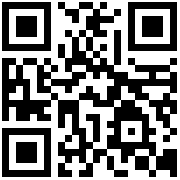In the pharmaceutical industry is used a blister film made of hard 8011 H18 aluminum foil with a thickness of about 20 or 25 micrometers (μ). If the drug is to be taken, it can simply be pushed through the hard aluminum. The hardness of the film facilitates the so-called push-through opening.
Normally only the outer side of the aluminum foil, which is directly visible to the customer, is provided with printing. But also, the inside sealed with the heat seal lacquer could be printed.
In this inner side, it is obligatory to have a double coating with a heat seal primer and the heat seal lacquer applied thereon. The primer ensures that the heat seal lacquer adheres securely to the aluminum foil and is matched to the aluminum foil.
The primer can also be dyed. The reasons for this are mainly for marketing, and not to protect, even better, the drugs. The primer coat is followed by the heat seal lacquer. If the primer is dyed, the heat sealant protects the medicament against the color pigments in the primer – the colour pigments are enclosed between the aluminum foil and the heat sealant lacquer.

Of the packed medicament in form of capsules or tablets should be particularly safe from unauthorized opening by children's hands, it is a good idea to close the blister packs with soft aluminum foil.
The same applies to 8011 soft aluminum foil as with hard aluminum foil. However, the thickness and flexibility of the aluminum foil makes it difficult for children to push the tablets through the soft aluminum foil. The aluminum foil is extra perforated at the sealing seams so that it can’t be completely removed from the blister film.
In the pharmaceutical industry, composite films of aluminium and paper and / or PET are used as cover films. A paper with a weight of 40-50 g / m² is laminated with aluminum foil. Cover foils with 8011 aluminum and paper can be printed directly on the outward-facing surface of the paper.




QR Code
